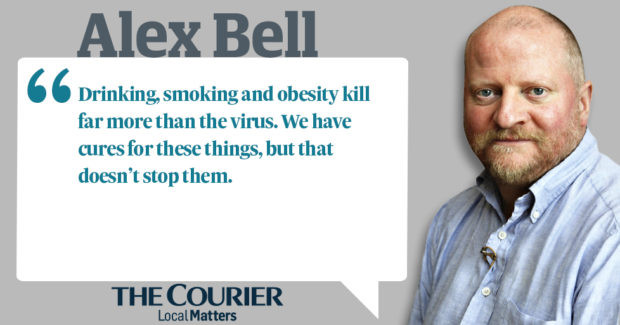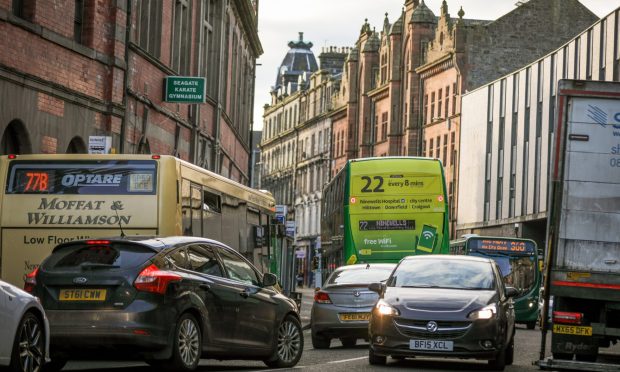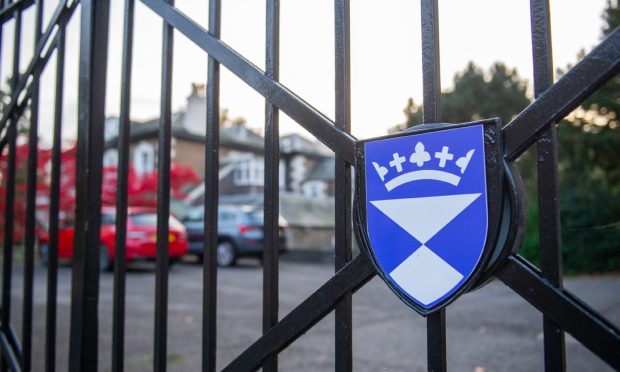Having a regular death count is alarming. Being told people are dying is upsetting and it focuses the mind on prevention.
Latest figures pointing to “X” dead in the last 24 hours seems important. The only other time we report fatalities like this is during war. It gives Covid the appearance of an enemy requiring national effort to be defeated.
But we are always dying from preventable causes. If general government policy were tracked by a similar count, then an average day in Scotland would record 158 deaths, to an annual total of 58,000, according to National Records of Scotland.
That would remind us we all die, a lot from preventable causes. It would force a very different assessment of how the state works. We’d become appalled by failures on poverty and health.
Under that approach, good people like Nicola Sturgeon wouldn’t just be shocked by policy mistakes over Covid, or saddened at virus deaths, but be devastated by the regular, structural failures of government.
Drinking, smoking and obesity kill far more than the virus. We have cures for these things but that doesn’t stop them.
Nor do we stop the economy, restrict liberties or throw billions of borrowed money to tackle poverty, which contributes to so many fatal conditions in Scotland, or even to tackle cancer, where we have solid evidence that treatment is massively improving life chances.
Our virus response shows how we have normalised a certain level of death to a certain level of state response.
The NHS is good enough for our accepted level of death. Staffing levels, the cost of the service, the wages of staff are calibrated to this tolerable level of policy failure.
So, too, the structure of care. We outsource care, pay minimum wage for it and employ many carers on gig economy contracts. We tolerate a level of preventable death and we accept a cheap-as-possible policy response.
Covid deaths have prompted us into throwing this whole structure upside down.
At first you think it’s because we desperately want to save every citizen’s life, but the much larger number of deaths from other causes reminds you it can’t be that. Then you look at the language of the Covid response.
We have been exhorted to “protect the NHS” which is odd. In a war, you wouldn’t fight to protect the Army, though you obviously hope for minimal damage to it.
Yet we set out acknowledging our NHS can only just cope with the current number of preventable deaths. The message is – don’t get Covid, because everyone dying from booze, cancer and heart disease have already taken the beds.
Surely the point of any health or care system is to respond to such threats. Life will always throw up new ways to die, and if we don’t like dying, then we need a health service that can cope.
The government is in effect saying, we have run the NHS down to the point it can no longer cope with the smallest increase in demand.
The equivalent would be to say don’t go defending our values because the Army is too small to cope.
Which leads you to the thought that instead of closing down our economy and free society, we might instead have committed to all the sensible advice about clean hands and social distancing, and given the NHS more money.
Instead we have gone down a hugely damaging route which makes no sense.
One example of this is the closure of bars and the restriction on drinking hours. The reason is that people might get drunk, ignore social distancing and spread Covid.
Any regular who likes getting drunk has a much higher chance of getting cancer, liver disease or committing a violent crime than dying from the virus.
But we don’t close bars as a rule because people like them. Drinkers know the risks. Life is complicated
Alternatively the appeal is beyond your own life – you might infect a vulnerable person. Regrettably, any threat to a vulnerable person increases the chance of death or complications.
Most of us are capable of distancing from the vulnerable by compassion, not government fear.
I don’t doubt politicians and scientific advisers acted with the best intentions but I also think they have been captured by the policy.
They are too invested in, and too tired, to see the strategy is fundamentally wrong. They have sent mental health, cancer care, the economy and our liberties over the top of the trench in the interest of protecting the trench.
Since lockdown began four people I have known have died. Two from cancer, one from Alzheimer’s and the other from MS.
Another two have been given life-threatening diagnoses. One from cancer, another of HIV, a virus that we don’t have the cure to and which has killed tens of millions. Nobody stopped the world for them. Nor would they have wanted that.
Covid has demonstrated a marvellous quality – that we will go to great ends to help each other. Perhaps the government should apply that to the far greater risks we already face.










